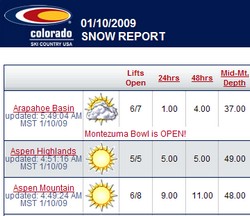
The National Weather Service has begun a significant upgrade to Denver’s weather radar. The new dual-polarization (dual-pol) radar brings 14 new data types and will greatly enhance the ability of forecasters to monitor and analyze storms.
During the upgrade while Denver’s radar is inoperative, ThorntonWeather.com’s radar page will be using the adjacent radar in Cheyenne. This will somewhat limit the ability to monitor storms during the two week period while the work is taking place.
The information below is from the National Weather Service and describes the dual-pol upgrade and what it brings to the table in terms of enhancements with monitoring severe weather.
- On the net: U.S. weather radar network gets upgrade (USA Today)
From the National Weather Service:
| During a two-week period, beginning August 30, 2012, the Doppler radar at your National Weather Service Forecast Office will undergo an upgrade to incorporate new technology. For these two weeks, radar data will be unavailable from NWS Denver/Boulder!
|
|
 |
|
| Current NWS Doppler radars transmit and receive pulses of radio waves in a horizontal orientation. As a result, the radar only measures the horizontal dimensions of targets (e.g. cloud and precipitation droplets). Dual-polarimetric radar transmits and receives pulses in both a horizontal and vertical orientation. Therefore, the radar measures both the horizontal and vertical dimensions of targets. Since the radar receives energy from horizontal and vertical pulses, we can obtain better estimates of the size, shape, and variety of targets. It is expected that this will result in significant improvements in the estimation of precipitation rates, the ability to discriminate between precipitation types (e.g. hail vs. rain), and the identification of non-meteorological returns, such as chaff, ground clutter, and smoke plumes from wildfires that are not uncommonly detected by weather radar systems such as WSR-88D. | |
 |
 |
 |
|
The full benefit of dual-pol radar, however, will not be fully realized until NWS forecasters and research meteorologists develop real-time expertise. |
|
 |
|
| A radio wave is a set of oscillating electric and magnetic fields, oriented 90 degrees to each other. Polarization of the wave is the direction, or orientation, of the electric field.
Horizontal Polarization |
|
 |
The electric field is oriented horizontally, along the x-axis (blue). The magnetic field is oriented vertically along the y-axis (white). |
| Vertical Polarization | |
 |
The electric field is oriented vertically, along the y-axis (orange). The magnetic field is oriented horizontally along the x-axis (white). |
 |
|




